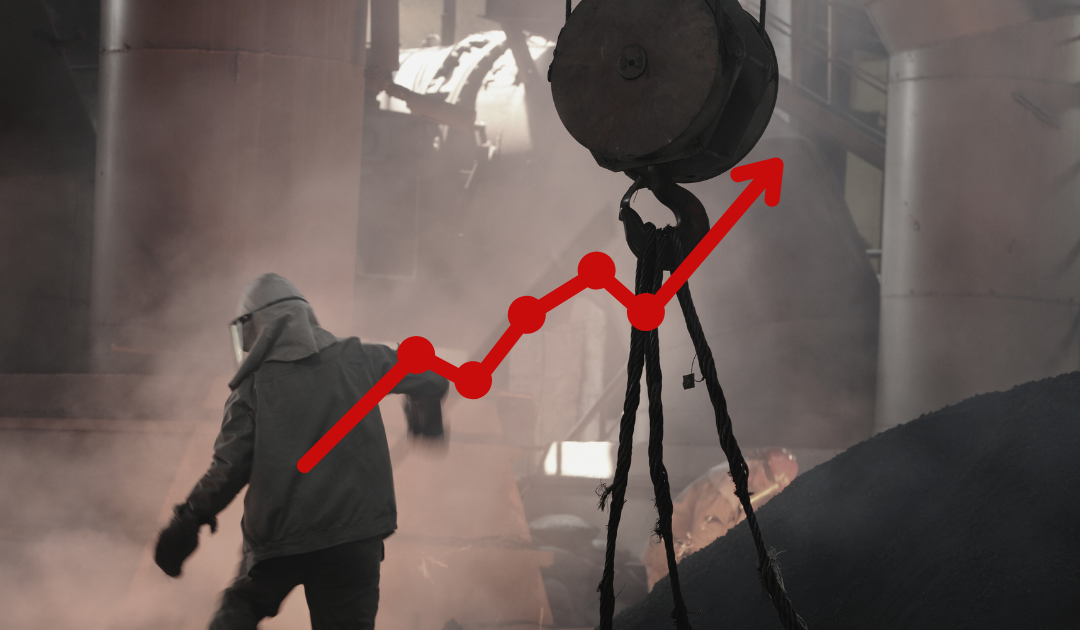
Adhering to OSHA regulations is essential when it comes to crane and rigging operations. Over the past decade, although the total citations OSHA has issued have been on a general decline, the total fines issued have significantly increased. While organizations are doing more to increase compliance, the cost of non-compliance is higher than ever. In this blog, we will explore the impact of OSHA regulations and investigations, the increased costs of non-compliance, and the results of imposed fines on the lifting industry.

A Decade of Increased Penalties
In 2010, the Department of Labor, under the leadership of Secretary of Labor Hilda Solis, signaled a shift towards heightened enforcement of OSHA regulations. Hilda proclaimed that there was a new sheriff in town, and she wasn’t wrong. This shift resulted in a substantial increase in fines, with total fines from OSHA jumping from $156 million in 2009 to $192 million in 2010. Fast forward to 2023, and the total number of OSHA fines issued reached a staggering $364 million. This upward trend in fines underscores the intensified focus on enforcement and compliance by OSHA.
Despite a downward trend in OSHA citations over the past two decades, the issuance of fees has increased significantly. Moreover, the average cost per citation issued has surged by over 16 times between 1990 and 2023. It is essential to note that these costs do not include additional legal expenses incurred during litigation and settlements.
Impact on the Construction Industry
The construction industry, known for its hazardous nature, has experienced a substantial impact from OSHA's increased enforcement. In 2022, construction accounted for the highest number of fatalities, with 1069 workers fatally injured.
To enhance safety within the industry, OSHA mandated that all crane operators be certified by December 10, 2018. Additionally, ASME updated its B30.5 standards in 2021, requiring a minimum of one qualified rigger for lifting operations around mobile cranes. Employers are tasked with ensuring strict adherence to these standards, further emphasizing the need for compliance in the construction sector.
OSHA’s 2022 compliance directive for their Compliance Officers regarding the new Cranes and Derricks in Construction puts increased emphasis on reviewing if companies are following their latest certification and qualification standards. OSHA wants to make sure that organizations are properly certifying their operators. Adherence to these regulations is predicted to make the lifting industry safer throughout this decade.
A Common Compliance Pitfall - Documented Monthly Inspections
One of the recurring compliance pitfalls in the crane and rigging industry is the failure to meet OSHA's crane inspection and documentation requirements. Documented monthly inspections play a crucial role in ensuring compliance, yet they continue to be among the top 10 most cited violations. It is imperative for organizations to prioritize and organize their teams to carry out all required inspections, including need-based inspections such as initial, after modifications, after repair, post-assembly, reinstallation, and return to service inspections, as well as time-based inspections including daily or shift inspections, monthly inspections, and annual inspections. Rigging equipment also has specific inspection requirements.
Beyond Fees – Additional Costs of Non-Compliance
As hefty as they can be, OSHA fines are just the beginning of the costs of non-compliance. OSHA regulations exist to set minimum standards for creating safe workplaces. Ignoring these standards opens the door to significant legal liabilities.
A developer found negligent in the case of a crane collapse in Texas was recently ordered to pay over $800 million to the estate and family of a woman who died when the crane collapsed into her apartment. The legal proceeding found that the tragedy could have been avoided if the developer made sure proper weathervaning practices were followed. Recent studies show that over 93% of crane accidents are the result of human error. Proper training and safety policies are essential to avoid additional loss of life.
Top 10 Crane Violations – OSHA
To further understand the focal points of OSHA violations in the crane and rigging industry, it is essential to review the top 10 crane violations identified by OSHA:
-
Inspections 1926.1412
-
Signal person qualifications 1926.1428
-
Power line safety 1926.1408
-
Keeping clear of the load 1926.1425
-
Operation 1926.1417
-
Assembly/Disassembly 1926.1404
-
Operator Qualification & Certification 1926.1427
-
Hoisting personnel 1926.1431
-
Wire rope-inspection 1926.1413
-
Training 1926.1430
Organizing for Success
The landscape of OSHA regulations and enforcement has witnessed a transformation over the past decade, with heightened penalties and an intensified focus on compliance. The construction industry, in particular, has felt the impact of these changes with increased certification and qualification requirements. By understanding the costs of non-compliance, organizations can proactively prioritize safety and compliance to mitigate risks and ensure a safe working environment for their employees.
CICB has helped organizations establish safe, compliant, and efficient lifting operations for over 50 years. Contact us to see how we can ensure your operations meet the latest standards.
About The Author
 CICB’s Texas Operations Manager John O’Connor, has held the position of senior instructor/inspector for CICB since 2006. He has a total of 28 years of experience in training, inspections, operations, planning, maintenance, administration, and personnel management for various types of lifting and earth moving equipment. He maintains a high level of proficiency in teaching crane and heavy equipment operations, inspections, and rigging using best practices, applicable OSHA, ASME and API standards and regulations. O’Connor holds NCCCO certifications for Operator, Inspector, Rigger, Signal Person, and Lift Director. He is also a NCCCO accredited Practical Examiner for Mobile and Articulating Boom Cranes, Overhead Cranes, Rigger, and Signal Person.
CICB’s Texas Operations Manager John O’Connor, has held the position of senior instructor/inspector for CICB since 2006. He has a total of 28 years of experience in training, inspections, operations, planning, maintenance, administration, and personnel management for various types of lifting and earth moving equipment. He maintains a high level of proficiency in teaching crane and heavy equipment operations, inspections, and rigging using best practices, applicable OSHA, ASME and API standards and regulations. O’Connor holds NCCCO certifications for Operator, Inspector, Rigger, Signal Person, and Lift Director. He is also a NCCCO accredited Practical Examiner for Mobile and Articulating Boom Cranes, Overhead Cranes, Rigger, and Signal Person.





